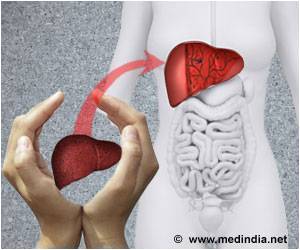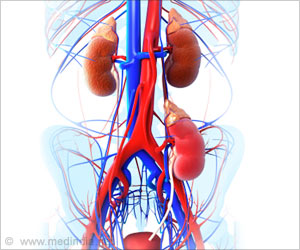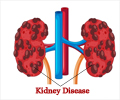Journal of the American College of Surgeons study reports single-center pediatric kidney transplant results over 53 years.

‘Compared with younger children, patients ages 11 to 18 years have greater odds of their new kidney failing (1.4 times the odds of younger children in their study).’





"The outlook for infants and children with end-stage kidney disease was once dismal, with poor survival rates after transplant," said study principal investigator Srinath Chinnakotla, MD, FACS, an associate professor in the Department of Surgery at the University of Minnesota Masonic Children's Hospital in Minneapolis, where the study was performed. "There has been great progress in pediatric kidney transplantation, and now the patient survival rate is almost 100 percent." Compared with the hospital's one-year survival rate of 97 percent since 2002, only 85 percent of pediatric kidney transplant recipients were still alive one year after their transplant 40 to 50 years ago, the study data showed.
In this new analysis of medical records of 1,056 pediatric kidney transplants performed at the children's hospital between June 1963 and October 2016, the researchers evaluated differences in rates of patient survival and other patient outcomes between three eras. Era 1 consisted of the early years of pediatric kidney transplantation, 1963 through 1983; Era 2 was from 1984 to 2001; and Era 3 encompassed 2002 to 2016.
Also improved over time is graft survival--continued function of the transplanted kidney--the investigators reported. In the first Era, only 42 percent of transplant recipients still had graft survival at 10 years, a statistic that improved to about 58 percent in Era 2 and 70 percent in Era 3.
"Thanks to advances in immunosuppressive [antirejection] medications including steroid-free drugs, better surgical technique, and improved management of infections after kidney transplant, children ages 10 years and younger now have the best long-term graft survival of all ages," Dr. Chinnakotla said.
Advertisement
Living-Donor Kidney Transplants
Advertisement
In the current Era, the 10-year graft survival rate was 78 percent for living-donor transplants compared with 57 percent for kidneys from deceased donors.
Half of all living-donor transplants in Era 3 are projected to still be functioning (called the graft half-life) at 25 years, whereas half of deceased-donor grafts have a projected survival of 19 years.
Living-donor graft survival was superior even when the donor was not related to the transplant recipient. "For children with end-stage kidney disease," Dr. Chinnakotla said, "kidney transplant is the only therapy that offers them the long-term possibility of a near-normal life, and a living-donor graft is their best option."
Nationwide, however, fewer young patients are benefiting from living-donor kidney transplant. Among all pediatric kidney transplants, the percentage that were living-donor grafts dropped from 50.1 percent in 2004 to 33.7 percent in 2015, per the OPTN.1 In the study by Dr. Chinnakotla's group, the proportion of living donors was higher, at 65 percent in Era 3 but still lower than the 70 percent in Era 2.
"The declining rates of living donation for children are concerning," he said. "Living donation should be encouraged for all patients with kidney failure, especially small children."
Recent North American data show that infants do worse than older children do after a deceased-donor kidney transplant.2 However, in this new study from the University of Minnesota, infants reportedly had outcomes similar to those in older children throughout all three Eras. Dr. Chinnakotla attributed their success to their surgical technique, which he said allows them to transplant adult kidneys into babies and small children; an experienced transplant team; and careful patient monitoring after transplant.
Most of their patients were white, a race known to have better transplant success than blacks. Yet, Dr. Chinnakotla said he believes that Hispanic and black children at their institution also fare better after kidney transplant today compared with years ago.
Reasons for Transplant
The three most common diseases causing kidney failure and requiring a transplant were the same in all three Eras, according to the researchers. These conditions were congenital kidney anomalies (abnormally developed kidneys at birth), obstructive uropathy (blockage by a valve of the passage of urine from the kidneys to the bladder), and congenital nephrotic syndrome (an inherited disorder in which protein develops in the urine and the baby's body swells).
Causes of death of pediatric transplant recipients did change over the years, as reported in the article. In Era 1, the primary cause of death was infection, which Dr. Chinnakotla said rarely causes post-transplant death today because of advances in infection prevention and treatment. In Era 3, children were most likely to die of sudden unknown causes in the first year after transplant, and after the first year, due to motor vehicle crashes or other types of trauma.
Some Improvements Needed
Some challenges remain in pediatric kidney transplantation nationwide, according to Dr. Chinnakotla.
Compared with younger children, patients ages 11 to 18 years have greater odds of their new kidney failing (1.4 times the odds of younger children in their study). Preteens and teens tend to have worse results after transplant largely because they are more likely to not adhere to taking their medications as instructed, he said.
Another problem is sensitization, in which harmful antibodies develop after transplant that attack foreign tissue and make the body more likely to reject another kidney transplant. In other patients, kidney disease can recur after a transplant.
"These [problems] all deserve our special attention if further progress is to be made," the authors wrote in their article.
Source-Eurekalert















